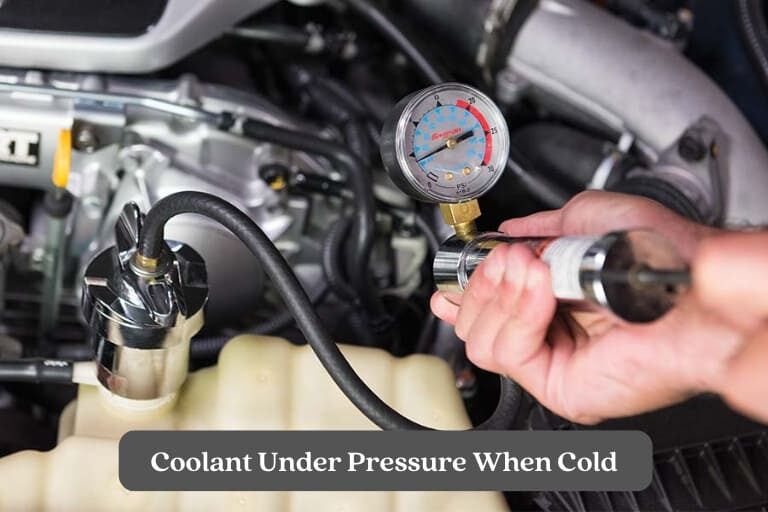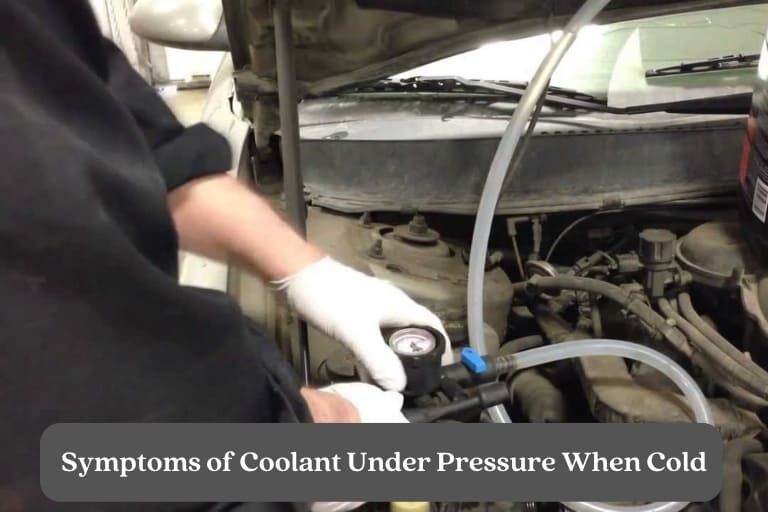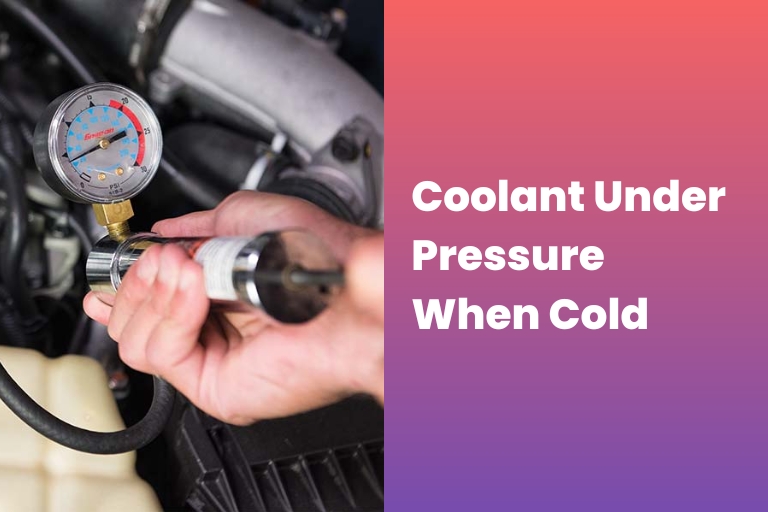Coolant, or antifreeze, is a liquid mixture that absorbs and transfers heat from your car’s engine. It plays a critical role in regulating your engine’s temperature, preventing it from overheating, and ultimately keeping your vehicle running smoothly.
One of the key factors in maintaining the proper function of your car’s coolant system is maintaining the correct pressure level. A pressurized coolant system is more efficient, preventing leaks and ensuring the coolant can circulate throughout the engine effectively. However, if the pressure is too high or too low, it could indicate a problem with the coolant system and should be addressed by a mechanic.
In this blog, we will discuss the importance of maintaining proper coolant pressure and how to ensure that your coolant system works at its best.
Contents
Causes of coolant still under pressure when cold

There are several potential causes for coolant still being under pressure when the engine is cold, some of which include the following:
- Leaking head gasket: A head gasket seals the engine block and cylinder head, preventing coolant and combustion gases from mixing. A leaking head gasket can cause coolant to be forced into the combustion chamber, raising the pressure in the coolant system.
- Faulty radiator cap: The cap maintains the proper pressure in the coolant system. A faulty radiator cap can cause the pressure to be too high, even when the engine is cold.
- Blocked radiator: A clogged radiator can prevent coolant from flowing correctly and cause an increase in pressure. A build-up of debris or corrosion can cause this.
- Combustion pressure getting into the cooling system: In rare cases, combustion pressure can enter the cooling system, causing an increase in pressure. A problem with the engine, such as a cracked cylinder head or damaged piston, can cause this.
Symptoms of coolant still under pressure when cold

There are several symptoms that can indicate that coolant is still under pressure when the engine is cold, some of which include the following:
- Overheating engine: If the coolant system is under too much pressure, it can prevent the engine from cooling properly, causing it to overheat.
- Bubbles in the radiator or coolant: If coolant is under pressure, it can create bubbles in the radiator or coolant reservoir, which can be seen when the engine is running.
- Pressure in the cooling system when the engine is cold: A pressurized coolant system, when the engine is cold, can indicate a problem with the coolant system, such as a faulty radiator cap or a leaking head gasket. Check This Article – Coolant Coming Out of the Radiator Cap
- Pressure in the expansion tank when cold: The expansion tank is designed to hold excess coolant, and if pressure is present in the expansion tank when the engine is cold, it can indicate a problem with the coolant system.
- Warning lights or messages on the dashboard: Some vehicles may have warning lights or messages that will appear on the dashboard when there is a problem with the coolant system, such as a high coolant temperature or low coolant level. I have also written an article about how coolant can cause check engine light to come on.
Consequences of coolant still under pressure when cold
If coolant is still under pressure when the engine is cold, it can have several consequences that can affect your vehicle’s overall performance and efficiency. Some of the potential consequences include the following:
- Damage to the engine and other components: If the coolant system is under too much pressure, it can cause damage to the engine and other features, such as the radiator, hoses, and water pump. This can lead to costly repairs and even engine failure.
- Reduced efficiency and performance of the vehicle: If the coolant system is not functioning correctly, it can cause the engine to overheat, which can reduce the efficiency and performance of the vehicle. This can lead to decreased fuel economy and reduced power.
- Increased risk of breakdowns and costly repairs: If the coolant system is not working correctly, it can increase the risk of breakdowns, which can be expensive to repair. It can also lead to other problems with the vehicle, such as a blown head gasket or a damaged radiator.
Solutions
There are several solutions to address coolant still under pressure when the engine is cold, some of which include:
- Identifying and fixing leaks in the cooling system: A leak in the coolant system can cause the pressure to be too high, even when the engine is cold. A mechanic can identify and fix leaks in the cooling system, such as a leaking head gasket or a damaged hose.
- Replacing a faulty pressure cap: If the pressure cap is not functioning correctly, it can cause the coolant system to be under too much pressure, even when the engine is cold. Replacing the pressure cap with a new one will help to maintain the proper pressure in the coolant system.
- Cleaning or replacing a blocked radiator: A clogged radiator can cause the coolant system under too much pressure, even when the engine is cold. A mechanic can clean or replace a blocked radiator, ensuring the coolant can flow properly.
- Checking and replacing coolant fluid as needed: The coolant fluid should be checked and replaced to ensure that the coolant system can function correctly. This can help prevent the coolant system from under too much pressure, even when the engine is cold.
- Regular checks and maintenance: Regular checks can help prevent coolant from still under pressure when cold by identifying and addressing any potential issues before they become a bigger problem. This can include checking the coolant level and pressure, inspecting hoses and other components, and ensuring that the coolant fluid is in good condition.
Also, Check the following:
- 9 Signs You Need a Coolant Flush
- Why Is the Air Compressor Pushing Coolant Out?
- Coolant Coming Out of the Overflow
- Can You Put Ice in Your Coolant?
- What Happens if You Don’t Flush Coolant?
- Can Coolant Flush Cause Leaks?
- No Coolant in the Radiator, but Reservoir Tank is Full
- Do Cars Lose Coolant Over Time?
- Does Coolant Evaporate?
Conclusion
In conclusion, coolant still under pressure when the engine is cold can be a sign of a problem with the coolant system that needs to be addressed. If left unchecked, it can cause damage to the engine and other components, reduce the efficiency and performance of the vehicle, and increase the risk of breakdowns and costly repairs.
It is vital to address this issue as soon as symptoms appear, such as overheating, bubbles in the radiator or coolant, and warning lights or messages on the dashboard. Regular checks and maintenance can help prevent coolant from still under pressure when cold by identifying and addressing any potential issues before they become a bigger problem.
If you need help with the issue or how to fix it, it is recommended to consult a professional mechanic. They have the knowledge and expertise to diagnose and cure the problem properly, ensuring that your vehicle runs efficiently and reliably. It is always better to be safe than sorry, and regular check-ups are a must to keep your vehicle in good shape.
